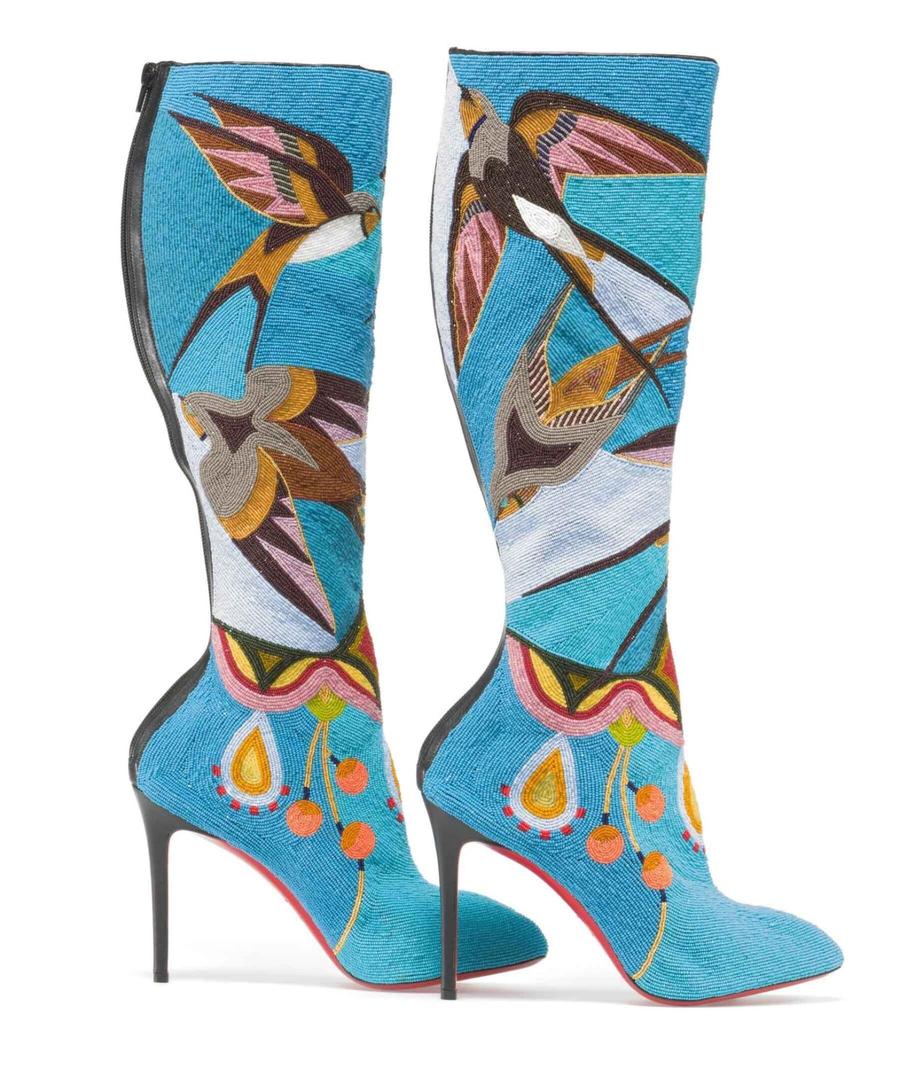Peabody Essex Museum, Salem, Mass
March 12, 2022 -

This winter, the Peabody Essex Museum (PEM) in Salem, Mass., opens a new gallery that, for the first time, combines its Native American and American collections. On This Ground: Being and Belonging in America brings together more than 250 historical and contemporary works from its collections to consider what it means to belong to a community, place, family and nation. Spanning more than 10,000 years of visual culture, the installation offers a range of voices and modes of expression, cultures expressed through different media, including sculpture, paintings, textiles and fashion, furniture, decorative arts, photography and video. Throughout, aesthetic affinities emerge across time, cultures, and geography. On This Ground is responsive to the urgent concerns of our time and provides an opportunity to grapple with our nation’s complex history while striving for a future that brings more connection and empathy. This groundbreaking installation opens to the public on March 12, 2022.

“Placing these two significant collections in direct dialogue and giving them equal emphasis and gallery space at this scale is unprecedented among American museums and underscores that the American experience is unimaginable without the inclusion of Native American art, history and culture,” said Lynda Roscoe Hartigan, PEM’s Rose-Marie and Eijk van Otterloo Executive Director and CEO.
Since its founding in 1799, PEM has continually collected and exhibited Native American art from its collection, which is among the oldest in the western hemisphere and world-renowned for its outstanding quality, condition, provenance, span of time, media, and geography. PEM’s American art collection showcases four centuries of artistic traditions to tell stories of American life and the ongoing cultural exchange between the nation and the wider world. The museum was among the first in the country to collect decorative arts, including furniture, interior furnishings, and everyday objects that reflect the material culture and life experiences of New England.

More recently, initiatives to collect contemporary works across diverse media have resulted in a wider representation of American art and culture through the 21st century.
The installation begins with a video of Massachusett Tribe at Ponkapoag community elder, Elizabeth Solomon, to welcome visitors and to share how the Massachusett have — despite thousands of years of natural and human-made changes — an unbroken connection to this place now known as Salem. Solomon reminds us that wherever you are in the Americas, you are on Native land, a concept underscored by an adjacent stone bear sculpture made by a 17th century Pawtucket artist. The introduction also includes the original Massachusetts Bay Charter (1629), on loan from the Salem Athenaeum as well as a poem by National Youth Poet Laureate, Amanda Gorman, whose work brings forward a chorus of voices that comprise America, illuminating defining moments and unsung heroes with empathy and hopefulness. Together, these elements invite us to consider the beginning of American self-governance, religious freedom, political authority, and the power of creative expression.
American artists have long mythologized European early contact and the settling of America. Two paintings investigating the iconic places where English pilgrims landed are installed in conversation with commissioned portraits of Wampanoag community members, made by Diné photographer Will Wilson. The continued presence of the Wampanoag shines through in Wilson’s Critical Photographic Exchange project, a series of luminescent tintypes produced in collaboration with the sitters.
Wilson’s portraits join over 70 works by modern and contemporary artists, including Will Barnet, Steve Locke, Truman Lowe (Ho-Chunk), Georgia O’Keeffe, Cara Romero (Chemehuevi), Alison Saar, Hank Willis Thomas, and Kay WalkingStick (Cherokee Nation).
“One of the goals of this installation is to deepen the appreciation of Indigenous aesthetics across time and space, and also to provide a bridge between the disciplines of Native American and American art, which have historically been separated,” said Karen Kramer, PEM’s Curator of Native American and Oceanic Art and Culture and project co-curator. “We are particularly excited by the transformative possibilities offered by bringing together different modes of aesthetic expression and cultural practice.”

Themes of Place and Identity are found throughout the installation, in sections where PEM’s Native American and American art works are combined or where each collection is considered on its own. The Native American art sections are rooted in Indigenous knowledges that emphasize ancestral connections among water, land, and the skyworld; Indigenous self-representation, storytelling, and fashion; and the continuum between past, present and future. The American art sections focus on landscapes; the international connections and influences of Salem artists over the last 400 years; and a close look at how objects contain layers of meaning about individual and collective identity in America.

“The project recognizes power dynamics that extend from historical events into the present and foregrounds a multiplicity of American stories and voices in order to create a broader and more nuanced understanding of our histories,” said Sarah Chasse, Associate Curator and project co-curator. “Many contemporary works in the installation ask us to consider whose stories have defined America and whether we are ready to acknowledge new stories.”
PEM’s Native American and American art collections converge across the installation and prompt new ways of looking at the past by exploring historical figures, events, and ideas. From religious persecution and the conflicts over North American land in the 17th and 18th centuries, to slavery, migration, and westward expansion, artists at turns create and disassemble national mythologies and challenge the notion of a single, unified American experience. In addition to object groupings that look deeply at the legacies of colonization, On This Ground offers lighter moments of joy, humor, and visual pleasure. Themes of place, women’s identity, and generational bonds across cultures provide a fresh look and surprising juxtapositions.
